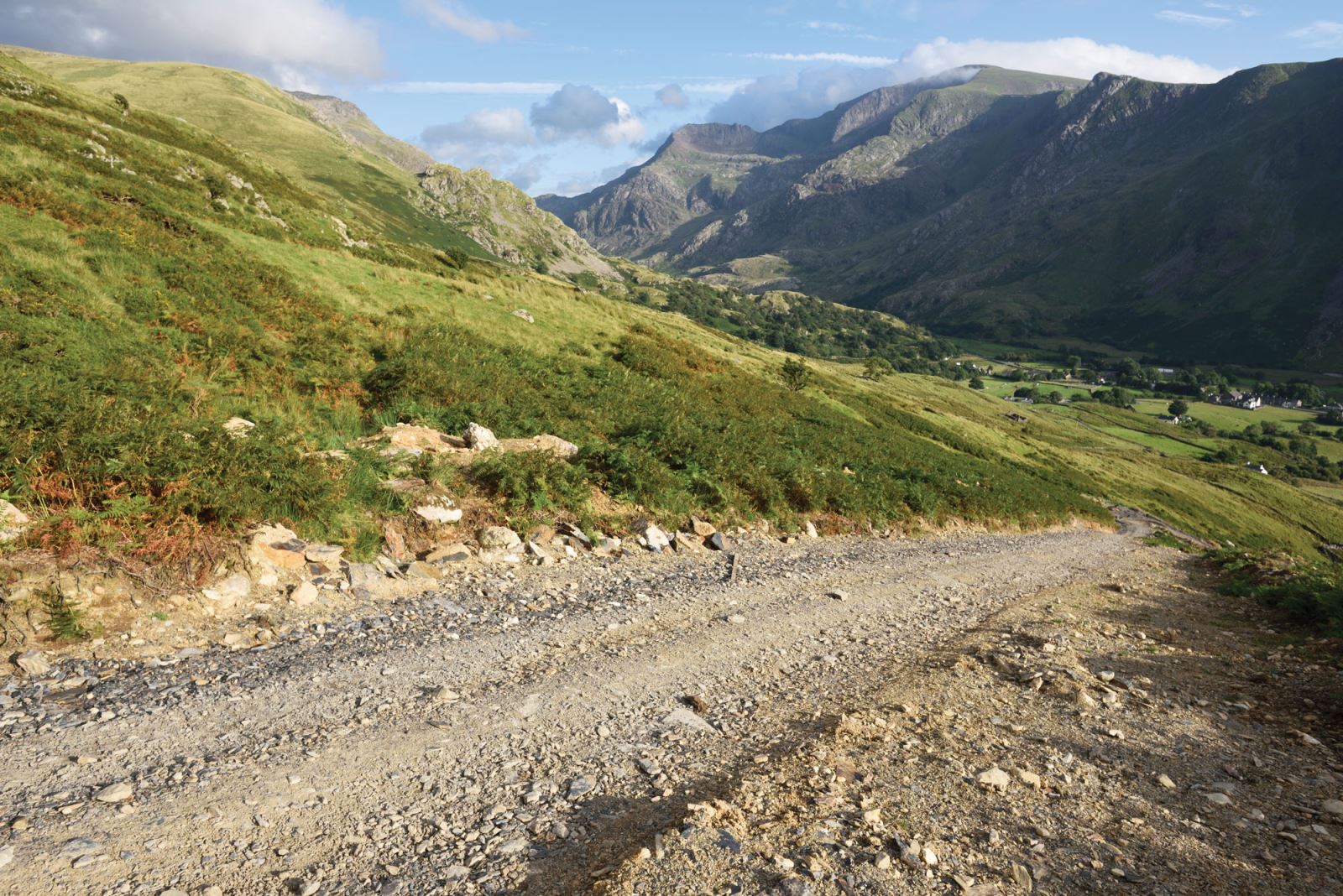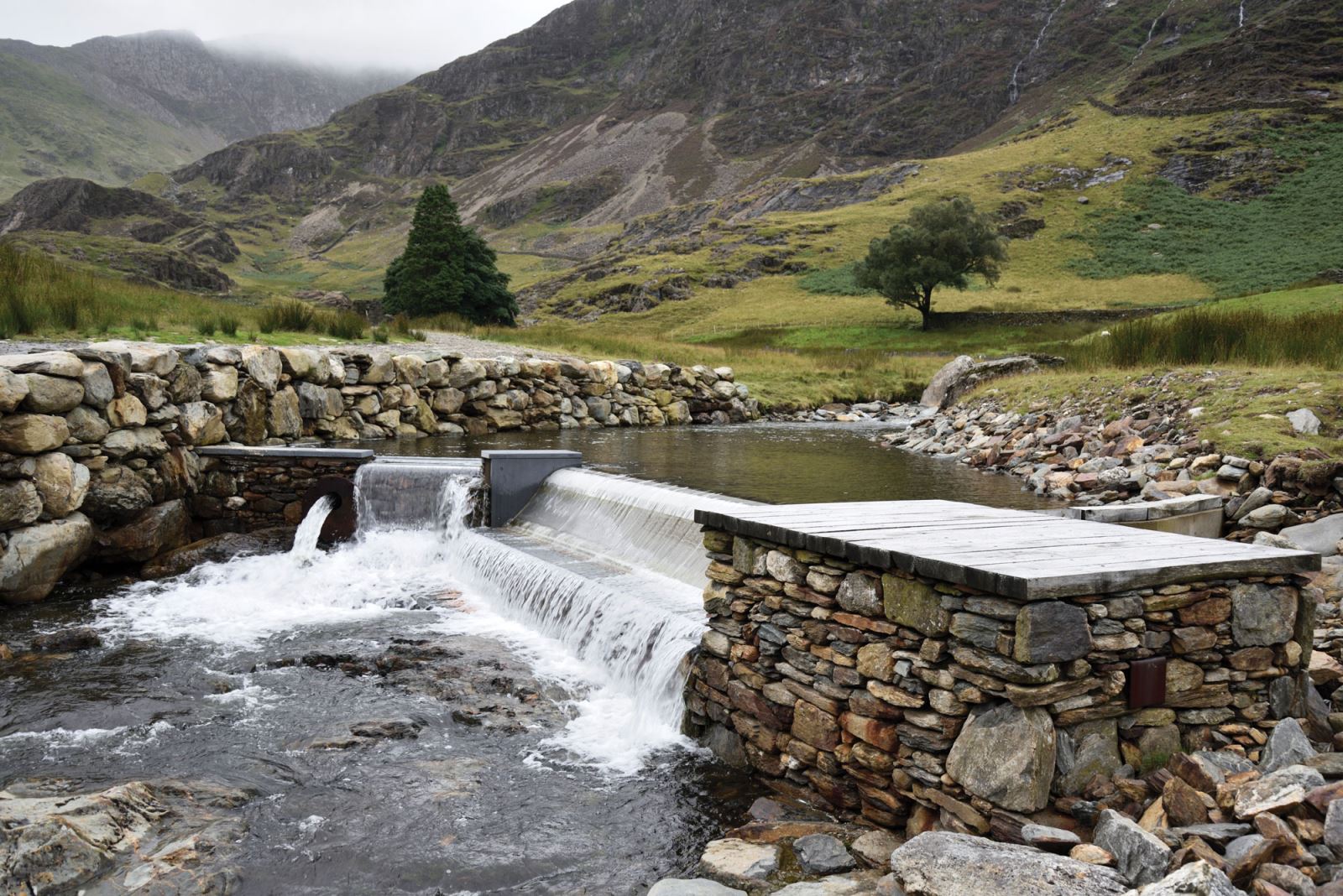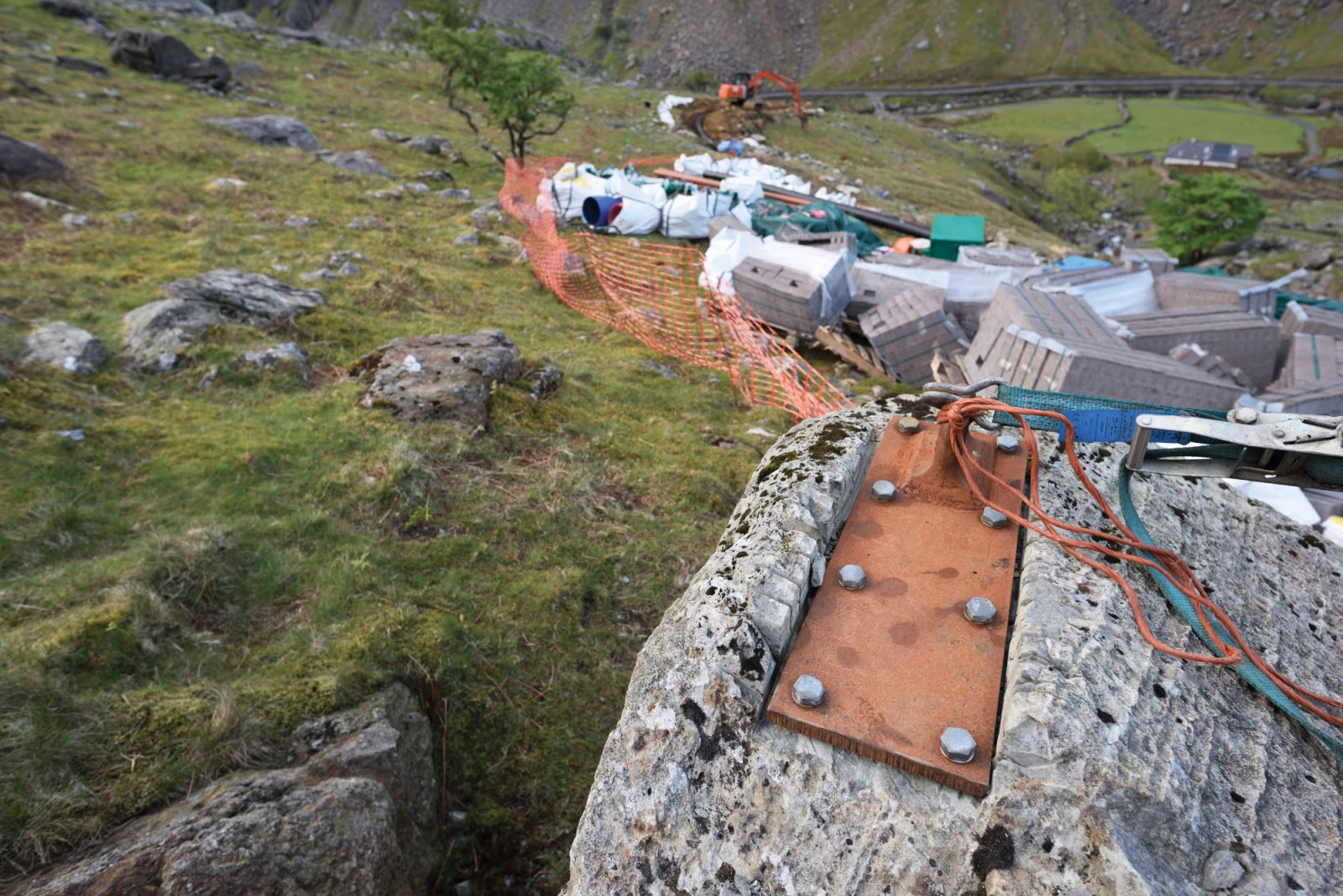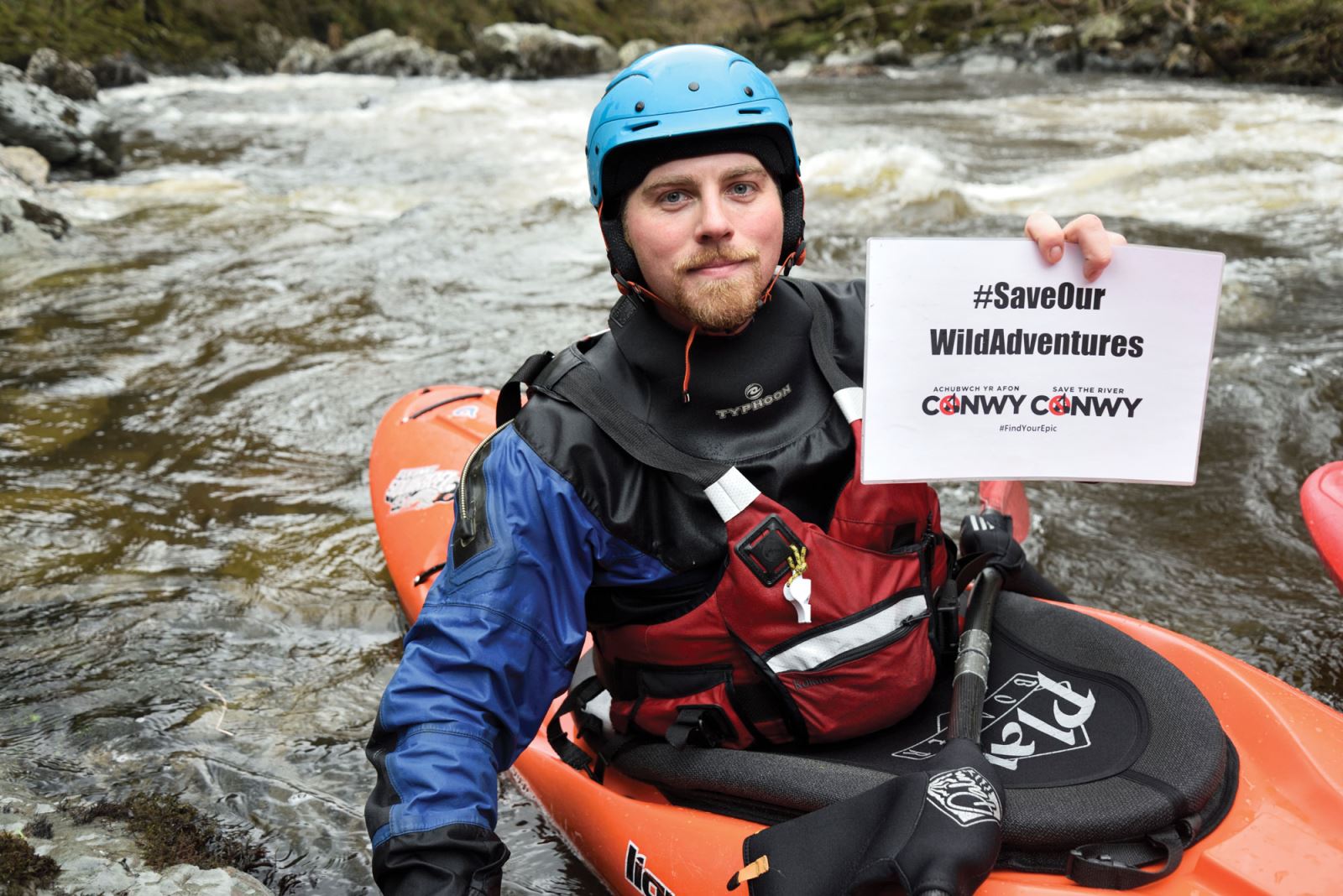Snowdonia's wild rivers and streams are at the centre of a hydropower gold rush. But where is the money going – and is this green energy worth the cost to the Welsh landscape? Ray Wood investigates.
The mountains of Wales are well known for being wet. And with Snowdonia’s maritime climate seeing an average rainfall of over 3,000mm per year, eyes have long been on this natural resource. Just over 50 years ago, the damming of one end of the Trweryn Valley near Bala, to create a reservoir serving Liverpool, sparked nationalist fervour and was a significant moment in modern Welsh history.
Today, water is once again a source of controversy in Snowdonia National Park. This time, it’s about harnessing the energy of its rivers and streams in hydro-power schemes to produce green electricity. And as the numbers of hydro schemes rise, some conservationists and organisations concerned with protecting Snowdonia’s upland landscape have serious concerns about their potential long-term effect.
"The growing concern is that commercial companies are exploiting the water of Wales and at the expense of the natural landscape and communities."
Elfyn Jones, the BMC’s access & conservation officer for Wales, has seen the reaction first hand: “In our local BMC area meetings there has been an overwhelming reaction of horror from members at the scale of construction and destruction of upland landscapes associated with some of the hydro developments, especially in and around the Llanberis Pass. What’s particularly galling for people is the apparent total lack of compliance by the developers, despite these schemes being subject to strict planning and environmental conditions and the lack of enforcement by the planning and regulatory bodies. The quality of remedial work is often shockingly poor for construction schemes located within areas that supposedly have international conservation and landscape protection.”
SCARS ON THE LANDSCAPE?
Anyone undertaking the Welsh 14-peaks recently would have noticed the fresh vehicular track that zig-zags across the hillside above Nant Peris to reach Cwm Dudodyn, below Elidir Fawr. Built to provide excavator access, this Special Area of Conservation now features a concrete weir and intake to divert water down a 1.8 kilometre pipe to a turbine house on the valley floor. And in May this year a stop order was placed on another hydro scheme by the Park planning authority, after a brown plume of soil and silt – related to mechanical digger excavation work at the nearby Afon Las site – was spotted at the inflow to Llyn Padarn.
 Access track for diggers to reach Cwm Dudodyn below Elidir Fawr with the Llanberis Pass behind. Photo: Ray Wood
Access track for diggers to reach Cwm Dudodyn below Elidir Fawr with the Llanberis Pass behind. Photo: Ray Wood
Of course, such issues aren’t always the case and some scars heal with time. The National Trust’s first large-scale hydro scheme (614 kW), that began operation in 2014 in Cwm Llan near Snowdon’s Watkin Path, now shows few signs of the ground works and construction that went into building it. The intake is situated among the old copper mine workings – where once a water wheel would have turned – and it’s now hard to notice where the mile of buried pipe runs, carrying the water that produces enough power for 445 homes. The electricity produced by the Trust hydro scheme is sold to their energy partner and green electricity supplier: Good Energy.
Glyn Hudson is jointly responsible for running Megni Energy Monitoring (a company involved with developing tools to help us relate to our use of energy) and is also a keen climber and walker. He thinks that small schemes have a place in the Park: “Appropriately designed and sensitively constructed small hydro schemes have minimum impact on the landscape and cause less environmental damage than exploiting fossil fuels. A 100 kW hydro scheme could power 100-150 homes.”
HUGE INCREASE IN HYDROELECTRIC PROJECTS
But how many small-scale schemes can one national park handle? In the last three years, there have been over a 100 hydro-related planning applications in Snowdonia, resulting in 104 hydroelectric schemes with a Natural Resources Wales “abstraction licence” operating in the National Park by the end of 2015.
Why have we seen this huge increase in the development of hydroelectric projects in the Park? In a word: feed-in tariffs. Feed-in tariffs (or FITs) were introduced in 2010 by the government to help increase the level of renewable energy in the UK. The FIT has three benefits: a generation tariff paid on the total output of the renewable energy system (whether you feed it into the grid or use it yourself), an export tariff paid to you for electricity exported to the grid and a saving on any electricity you need to buy to make up a shortfall.
 The National Trust hydroelectric scheme in Cwm Llan on the south side of Yr Wyddfa (Snowdon), which produces enough power for 445 homes. Photo: Ray Wood
The National Trust hydroelectric scheme in Cwm Llan on the south side of Yr Wyddfa (Snowdon), which produces enough power for 445 homes. Photo: Ray Wood
The money for FITs comes from the electricity suppliers – who pass on the cost of the scheme to all their electricity customers – and according to the FIT website: “These tariffs should cover the initial capital cost of installation and, according to the Government, earn a return up to 8% p.a. In practice that means you should earn back the capital cost at least two to three times over the duration of the tariffs.”
If you think this sounds like a good deal, you’re not alone. These tariffs make hydroelectric schemes attractive to commercial companies, who typically cover the initial capital costs and come to an arrangement with the land owner. Once started at a given tariff they last 20 years and are retail priced indexed.
But the growing concern is that commercial companies are exploiting the water of Wales and building small-scale hydro schemes for profit at the expense of the natural landscape and communities.
"At this rate it’s soon going to become difficult to enjoy walking alongside a naturally free-running stream in Snowdonia.”
“It’s not the short term scars on the countryside that are of importance, the grass will grow back again, after all, it did when a glacier came down the Llanberis Pass. The longer-term question to ask is who is making money from it?” commented Al Hughes, chairman of the Llanberis community micro (55 kW) hydro scheme. Al strongly believes in community ownership of water and that any scheme should have a direct and lasting benefit to the people that live in that catchment, rather than a multinational company, and that any profits should stay in Wales.
For John Harold, Snowdonia Society Director, FITs do what they are meant to, but the difficulty is that the economics driving the take-up doesn’t have effective regulation and strategic planning in tandem with the incentive: “The rate of implementation of hydro power in the Park has left policy behind. The regulatory process is on a case-by-case basis. Unless there is direct conflict with another scheme there is no way of putting a project into a wider context.”
 Bolts in the Llanberis Pass for an anchor to haul the plastic pipe up the hillside for the hydro scheme below Cwm Glas. Photo: Ray Wood
Bolts in the Llanberis Pass for an anchor to haul the plastic pipe up the hillside for the hydro scheme below Cwm Glas. Photo: Ray Wood
WEIR SCIENCE
Modern run-of-the-river hydro schemes for fast-flowing upland rivers involve construction of a weir with the flow controlled by a notch in the structure. Natural Resources Wales, the government body responsible for policing hydro schemes once operational, has a warning in its guidance notes of what a new weir may mean for a river: “They are often associated with the creation of lengthy depleted reaches, the disruption of sediment transport. morphological alterations, as well as various ecological impacts.”
Yet the steadily growing number of schemes being given an abstraction licence by Natural Resources Wales would seem to be at odds with their own guidance. As John Harold explains: “If we take Nant Peris as an example – that now has three schemes close to each other plus the one below Cwm Glas further up the Llanberis Pass – and transfer that to any Snowdonia valley, then at this rate it’s soon going to become difficult to enjoy walking alongside a naturally free-running stream.”
Enforcing compliance with a scheme’s abstraction licence is another difficult issue. Licenses are written to protect the environment and flow in the watercourse. From January to August 2015, of the 104 hydro power sites in Snowdonia for which Natural Resources Wales is responsible for licensing, it inspected 33. Seven were found to be in breach of their abstraction or impoundment licence; five of those seven were found to be breaching the terms of their licenses deliberately by altering the mechanics of the structures used to take the water. Enforcement responses can include prosecution, formal caution, monetary penalty, warning letter or advice and guidance.
Yet, in Wales, it’s not just streams that are under threat, but rivers too. A Snowdonia hydropower planning application that has attracted a great deal of concern is the £12 million Afon Conwy scheme put forward by RWE npower, part of the German multinational utility company RWE.
"Like a bag-for-life, renewable energy can be a convenient salve for the conscience. But all energy comes at a cost, which shouldn’t be swept under a green carpet."
Having a capacity of up to 5 MW (the upper limit qualifying for a FIT that isn’t a community project), it will involve a 1.2 metre high and 25 metre-wide dam and weir spanning the river, 350 metres upstream of the Conwy Falls. The water will run in a 1.6 metre diameter pipe for approximately a kilometre to just below the Fairy Glen gorge – an iconic location in the National Park that is a Site of Special Scientific interest due to its mosses and liverworts. As for these plants, a July 2016 survey states: “It is not possible to say with any confidence what effect the proposed scheme will have on the oceanic bryophyte interest, though there is clearly a risk of a significant negative impact.”
Dan Yates, a canoeist and Save the Conwy activist, thinks this is a line that cannot be crossed. “If you can build such a scheme on a major river like the Afon Conwy, an important route for migrating fish with protected habitats, as well as having a high recreational value, then it’s a green light to build one anywhere in Wales.”
 Rob Litherland of the Save the River Conwy campaign. Photo: Ray Wood
Rob Litherland of the Save the River Conwy campaign. Photo: Ray Wood
In February this year, a petition with over 6,000 signatures was delivered to the then Minister for Natural Resources, Carl Sargeant, objecting to the industrialisation of the Conwy. At the Snowdonia Park planning committee the following month, planning was turned down and RWE was asked to provide further information.
Even Patagonia’s Yvon Chouinard had written a letter asking the decision makers to oppose the development: “Damage to the sensitive ecology and environment of this area is certainly of highest concern… At Patagonia, our love and dependence on free-flowing, undeveloped rivers and wild places has inspired us to advocate against similar developments for nearly 30 years.”
In response, RWE say the Conwy hydropower scheme has the potential to supply the average annual domestic requirements of over 3,200 households. However, to put this in perspective one average offshore wind turbine of 3.6 MW can power more than 3,312 average EU households. The planning application has now been resubmitted to Snowdonia National Park Authority and Natural Resources Wales continue to delay their decision on giving an abstraction licence. For Dan and the Save the Conwy campaign, the clock is ticking again and their awareness-raising work continues.
Like a bag-for-life, renewable energy can be a convenient salve for the public’s environmental conscience. But all energy generation comes at a cost, which shouldn’t be swept under a green carpet. As the BMC says in its renewable energy policy: “Energy generation from renewable sources can make a valuable contribution to meeting the UK’s climate change targets. However, the BMC also believes that wild places and other valued landscapes are intrinsic to the quality of experiences sought by our members and that inappropriately sited energy development can damage the natural beauty and character of our wild spaces.”
The challenge is in how we strike the right balance, and micro schemes benefitting local communities are very different to large multinational developments. Are these hydro development schemes simply exploitation of our rivers and streams to farm the generous subsidies, or are they an important component of reducing our carbon emissions? Time will tell.
Ray Wood made his career as a photojournalist and is now also involved in filmmaking. Based in North Wales, he sits on the BMC’s Access Management Group and the Northern Snowdonia National Park Local Access Forum.
UPDATE: October 24, 2016
Since this piece was written, RWE have withdrawn their second planning application for large scale hydropower development on the Conwy, shortly before it was due to go before the Snowdonia National Park’s Planning and Access Committee on 12th October.
This was around the same time Natural Resources Wales (NRW) sent their response to the Park, saying:m"NRW have significant concerns with the proposed development as submitted. NRW recommend that you should only grant planning permission if the scheme can meet the following requirements and you attach the conditions listed below. Otherwise, we would object to this planning application.”
In August, the Park’s Senior Planning officer had also expressed his concerns about the new submission: "I therefore fail to see how the development as proposed helps the National Park Authority to fulfil its first purpose and satisfy the requirement to conserve and enhance natural beauty of the National Park, as set out… Strategic Policy A of the Eryri Local Development Plan.”
.jpg)
Join online today by Direct Debit and save 25% on your first year's membership.
WATCH: What does the BMC do for hill walkers?
GET THE KNOWLEDGE: BMC resources for hill walkers
« Back